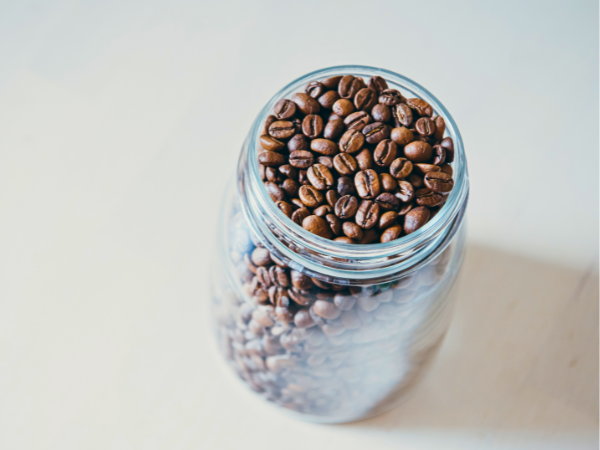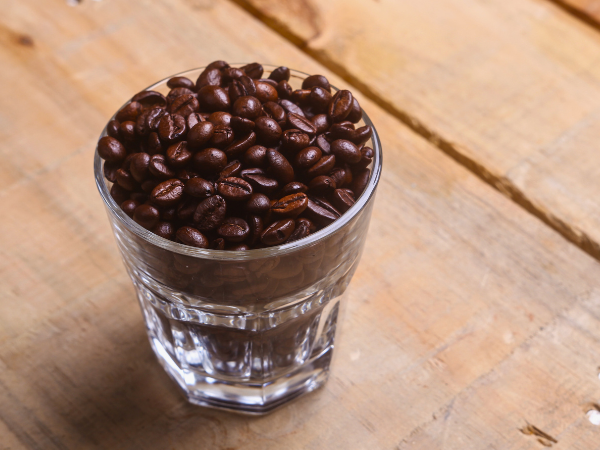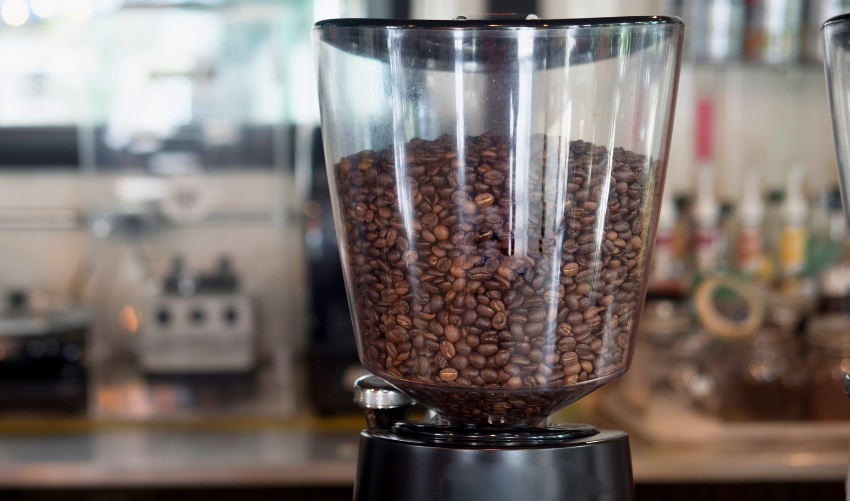Great coffee starts with fresh beans—but even the best beans can lose their flavor if not stored properly. Oxygen, light, heat, and moisture are the quiet culprits that can dull the rich aroma and taste you look forward to in every cup.
In this guide, we’ll explore practical, low-effort tips for storing your coffee beans the right way—so every scoop stays as fresh and satisfying as the day it was roasted.
Choosing The Right Container
Storing your coffee beans properly helps keep them fresh. One key factor is choosing the right container. The right container can protect your beans from air, light, and moisture. These elements can harm the flavor of your coffee.
Material Matters
Different materials can affect the freshness of your coffee. Here are some common options:
Plastic: Lightweight and often airtight, plastic containers can work well—but it’s important to ensure they’re food-safe and BPA-free. Just like with BPA-Free Coffee Makers, avoiding BPA in storage containers helps support a healthier, cleaner coffee experience overall.
- Glass: Clear glass looks nice but lets in light. Use dark glass or store it in a dark place.
- Metal: Durable and typically airtight. Stainless steel is a good choice.
Airtight Seal
An airtight seal is crucial for freshness. Air can cause beans to lose flavor quickly. Choose containers with secure lids. Look for features like:
- Silicone seals
- Latch closures
- Vacuum seals
Size Matters
The size of the container affects how often you open it. A large container can let in more air. If you buy coffee in bulk, consider splitting it into smaller containers. This helps keep the rest fresh. Here’s a quick guide:
| Container Size | Amount of Coffee |
|---|---|
| Small | 8 oz (1 cup) |
| Medium | 16 oz (2 cups) |
| Large | 32 oz (4 cups) |
Light Protection
Light can degrade the quality of your coffee beans. Choose opaque containers that block light. A dark pantry or cupboard is ideal for storage. This helps maintain the rich flavor of your coffee.
Temperature Control
Heat speeds up the breakdown of natural oils and aromas, which can lead to a stale or flat-tasting brew. Try to store your coffee away from appliances like ovens or toasters, which can radiate heat even when not in use. Even small daily temperature changes can impact freshness, so aim for a consistently cool environment.

Optimal Storage Locations
Where you store your coffee can have just as much impact as how you store it. Exposure to heat, moisture, and light are the top enemies of coffee freshness.
That’s why it’s important to avoid placing your beans near windows, open shelves, or damp areas like the fridge. A thoughtful storage location can help retain the depth and complexity of your favorite roast—and keep it tasting great for longer.
Cool And Dark Places
The ideal environment for storing coffee beans is both cool and dark—conditions that slow down oxidation and preserve natural flavors. Direct sunlight and warm air can degrade quality quickly, so aim for places that are consistently shaded and insulated from kitchen heat.
Here are a few great storage spots to consider:
- Pantry – Often cool, enclosed, and away from heat sources.
- Cabinet – Especially one away from the stove or above the counter.
- Basement – A good option if dry and temperature-controlled.
The goal is to protect your beans from fluctuating elements so you can enjoy each cup as it was meant to taste—bold, fresh, and full of character.
Avoiding The Kitchen
The kitchen might seem like a natural choice. It often has fluctuating temperatures. Cooking can create moisture, which is bad for beans. Store coffee away from the kitchen if possible.
Using Airtight Containers
Choose containers that seal tightly. Airtight containers protect beans from air and moisture. Here are some good options:
| Container Type | Benefits |
|---|---|
| Glass Jars | Non-reactive, easy to clean |
| Metal Canisters | Durable, often vacuum-sealed |
| Plastic Containers | Lightweight, portable |
Consider Temperature
Keep beans at a stable temperature. Ideal range is between 60°F and 70°F. Avoid places like:
- Near ovens
- Near windows
- In the fridge or freezer
Protecting From Humidity
Humidity can ruin coffee beans. High moisture levels lead to stale flavor. Keep beans in a dry place. Avoid areas with high humidity, like:
- Bathrooms
- Near dishwashers
By choosing optimal storage locations, you can keep your coffee beans fresh. Pay attention to temperature, light, and humidity. This ensures a great cup every time.
Avoiding Common Mistakes
Storing your coffee beans properly keeps them fresh and flavorful. Many people make mistakes that ruin their coffee experience. This section will help you avoid those common mistakes.
Avoiding Air Exposure
Air can quickly spoil coffee beans. Oxygen makes them stale. Store beans in an airtight container. Choose a container with a seal. Do not leave them in open bags.
Choosing The Wrong Location
The place you store your coffee matters. Avoid hot or humid areas. Keep beans away from direct sunlight. The best spots are:
- Cool pantry
- Cabinet away from heat
- Dark cupboard
Using The Wrong Container
Not all containers are good for coffee. Glass jars let in light. Plastic can trap moisture. Metal containers may react with coffee. Use these containers instead:
| Type of Container | Benefits |
|---|---|
| Airtight glass jar | Protects from air and light |
| Vacuum-sealed bag | Removes air and keeps freshness |
| Opaque ceramic canister | Blocks light and seals tightly |
Storing Ground Coffee Instead Of Whole Beans
Ground coffee loses flavor quickly. Whole beans stay fresh longer. Grind your coffee just before brewing. This simple step improves taste.
Neglecting To Check Expiration Dates
All coffee beans have a shelf life. Check the roast date. Freshness is key for great taste. Use beans within:
- Two weeks after opening
- Three months if unopened
Keep track of your coffee dates. Fresh beans make a big difference.

Understanding Roast Types
Different roast types affect flavor, aroma, and freshness. Understanding these roast types helps you choose the best storage methods. Light, medium, and dark roasts each have unique qualities.
Light Roast
Light roast coffee beans are roasted for a shorter time. They retain more of the original coffee flavor. The taste is bright and fruity. This roast type has a higher acidity compared to others. Here are some key points about light roast:
- Roasting time: 9-11 minutes
- Color: Light brown
- Aroma: Floral and fruity notes
- Caffeine level: Higher than darker roasts
Due to their delicate nature, light roasts can go stale quickly. To keep them fresh:
- Store in an airtight container.
- Keep away from light and heat.
- Use within two weeks of opening.
Light roasts offer a unique taste experience. Enjoy them fresh for the best flavor.
Medium Roast
Medium roast coffee strikes a balance between acidity and body. The flavor is richer and smoother than light roast. This roast type develops a deeper aroma. Here are some important features of medium roast:
- Roasting time: 11-13 minutes
- Color: Medium brown
- Aroma: Nutty and sweet
- Caffeine level: Moderate
Medium roasts are versatile and popular among coffee drinkers. They stay fresh longer than light roasts. To maintain their quality:
- Store in a cool, dark place.
- Use a container that seals tightly.
- Consume within three weeks of opening.
Enjoy the balanced flavor of medium roasts. They offer a satisfying coffee experience.
Dark Roast
Dark roast coffee beans undergo a longer roasting process. This creates a bold and intense flavor. The beans are dark brown, almost black. They have a low acidity level. Here are key details about dark roast:
- Roasting time: 13-15 minutes
- Color: Dark brown to black
- Aroma: Smoky and rich
- Caffeine level: Lower than lighter roasts
Dark roasts are more forgiving in terms of freshness. They can last longer than light and medium roasts. To keep them fresh:
- Store in a dry, cool place.
- Use an airtight container.
- Consume within one month of opening.
Dark roasts provide a deep and bold coffee experience. They are perfect for those who enjoy strong flavors.
Best Practices For Different Quantities
Knowing how to store small and large amounts can help maintain the quality of your coffee. Here are the best practices for different quantities to ensure your beans stay fresh.
Small Batches
For those who enjoy a fresh cup of coffee daily, storing small batches is the best choice. Small batches allow for maximum freshness. Here are some tips for storing small quantities:
- Use an airtight container: This prevents air from getting in and ruining flavor.
- Keep it cool: Store your beans in a cool, dark place. Avoid direct sunlight.
- Consider vacuum sealing: This method removes air and keeps beans fresh longer.
Here’s a quick guide to storing small batches:
| Storage Method | Benefits |
|---|---|
| Airtight Container | Prevents oxidation and keeps flavor intact. |
| Vacuum Sealing | Extends shelf life by keeping out air. |
| Dark Cupboard | Protects from light and heat. |
For small amounts, aim to buy coffee beans weekly or bi-weekly. This practice ensures you always have fresh beans on hand. Remember to grind only what you need. This keeps the remaining beans safe and flavorful.
Larger Quantities
Buying coffee in larger quantities can save money. However, it requires careful storage to maintain freshness. Follow these tips for larger quantities:
- Divide into smaller bags: Split the bulk into smaller portions. This limits exposure to air.
- Use a freezer: Store extra beans in the freezer. This can extend their life up to six months.
- Label your bags: Write the date on each bag. This helps you track freshness.
Here’s a quick reference for storing large quantities:
| Storage Tip | Purpose |
|---|---|
| Divide into Portions | Reduces air exposure each time you open a bag. |
| Freezing | Slows down the aging process. |
| Labeling | Keeps track of how long beans have been stored. |
Ensure to thaw only what you need. Avoid refreezing. This practice keeps the beans fresh for brewing. Store the main supply in a dark, cool place. With proper storage, you can enjoy your favorite coffee for longer.
Impact Of Environmental Factors
Environmental factors play a big role in how long your coffee stays flavorful. Understanding these factors can help you enjoy the best taste from your beans. Let’s look at three major factors: humidity, temperature, and light exposure.
Humidity
Humidity affects coffee beans more than many realize. High humidity can cause beans to absorb moisture. This leads to a stale taste and loss of aroma. On the other hand, low humidity can dry out the beans. This results in a lack of flavor. Here are some tips for managing humidity:
- Store beans in an airtight container.
- Keep the container in a cool, dry place.
- Avoid storing beans in the fridge or freezer.
Here is a simple table showing the effects of humidity on coffee:
| Humidity Level | Effect on Coffee |
|---|---|
| High (Above 70%) | Beans absorb moisture, leading to staleness. |
| Optimal (50-70%) | Beans maintain flavor and aroma. |
| Low (Below 50%) | Beans dry out, losing essential oils. |
Keep an eye on humidity levels. Use a hygrometer to measure moisture in the air. This helps maintain the right environment for your coffee.
Temperature
Temperature greatly affects the freshness of coffee beans. Beans should be stored at stable temperatures. Fluctuations can lead to moisture buildup. Ideal storage temperature is between 60°F and 70°F (15°C and 21°C). Here are tips for temperature control:
- Avoid storing beans near heat sources like ovens or stoves.
- Do not keep beans in areas with direct sunlight.
- Use a dark-colored container to absorb heat.
Here’s a quick guide to temperature effects on coffee:
| Temperature Range | Effect on Coffee |
|---|---|
| Above 75°F (24°C) | Beans degrade quickly, losing flavor. |
| Optimal (60°F – 70°F) | Beans retain freshness and flavor. |
| Below 60°F (15°C) | Beans stay fresh longer but may lose oils. |
Maintaining the right temperature keeps your coffee beans tasting great.
Light Exposure
Light can damage coffee beans. Ultraviolet (UV) rays break down essential oils. This leads to a loss of flavor and aroma. Proper storage should minimize light exposure. Here are some effective strategies:
- Store beans in opaque containers.
- Keep the container in a dark cupboard or pantry.
- Avoid clear glass containers.
Here’s how light exposure affects coffee:
| Light Exposure Level | Effect on Coffee |
|---|---|
| High | Beans lose flavor quickly. |
| Moderate | Beans maintain some freshness. |
| Low | Beans stay fresh for a longer time. |
Protect your coffee from light. This simple step can help keep your coffee beans fresh.

